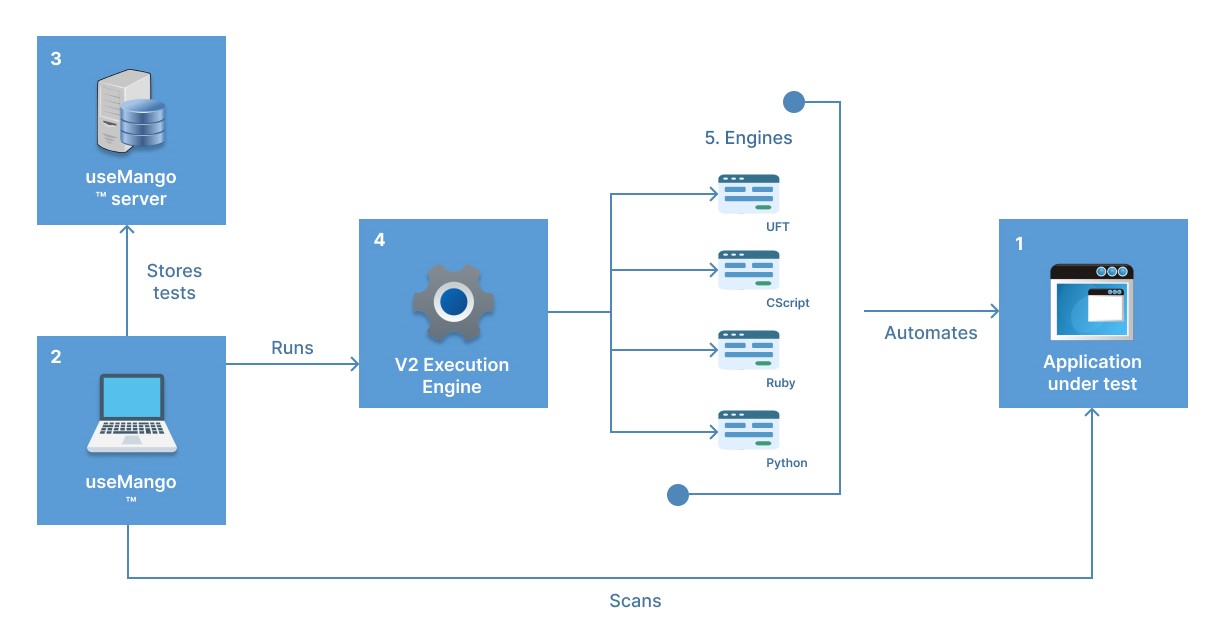Test System Overview
The roles and responsiblities of the applications within the test system are introduced below:

-
Application Under test
This is the application to be tested. Tests will interact with the AUT by sending instructions to it’s user interface and then checking whether the resulting status or data are as expected.
-
useMango™
useMango™ helps to create the tests for the AUT quickly and easily by:
- Providing a Test Designer in which tests are built from a sequence of components, together with the data inputs necssary to make the required actions happen. All tests created are automatically stored to the useMango™ server.
- Components library in useMango™ provides a large number of standard components which are sufficient to build a test at a detailed level. useMango™ comes with the capability of scanning SAP GUI and Oracle Forms. Through scanning, useMango™ is able to discover the user interface elements that exist and determine how to automate them in a test. The intructions to achieve this are encoded into a new scanned component which can then be used when creating tests.
- Validating that the designed test works as expected by enabling the test to be run step-by-step and giving detailed feedback at each point.
-
useMango™ server
useMango™ supports multiple test projects providing:
- Persistent storage of all tests resources for each project, including test definitions, reusable test components, test data and code libraries.
- Multi-user access and coordination of activity,
- Features for managing and maintaining projects,
- Project backup and restore capabilities.
-
useMango™ Jenkins plugin
useMango™ plugin in Jenkins provide the following functions:
- Selection of tests into test sets for execution,
- Test execution management and scheduling,
- Capture and reporting of test execution outcomes.
-
V2 Execution Engine
V2 execution engine provides the capabilty for executing a useMango™ test. It provides:
- Execution of test scripts written in multiple languages and operating through multiple drivers, enabling business process tests to be carried out across application boundaries and technologies.
- Writing a log of the test activity, even if the actual execution failed due to script or environment issues.
- Execution of tests with multiple datasets.
-
Drivers
By executing tests, each component can be executed in a specific manner. This enables the use of multiple languages and drivers making it possible to bridge the gap between applications easily:
- Components can be scripted in different languages.
- Components can be linked to different libraries to enable the use of different application drivers (i.e. Selenium Web Driver or UFT Object Model).